Making bread kvass is a great way to use up stale sourdough bread. It's light and refreshing, nice and fizzy. And it's fermented, so it contains probiotics.
As much as I love my homemade sourdough bread, there is always some stale bread left over because it makes a giant loaf of bread. And since I hate wasting food, I'm always looking for something to do with it.
I've made croutons several times, and sometimes I freeze any leftovers and save them for stuffing. But when I don't need either of those, I can make a delicious and refreshing beverage.
Wait, a drink made out of bread?? That's right, you can turn your old, stale sourdough bread into deliciously fizzy and refreshing Bread Kvass.
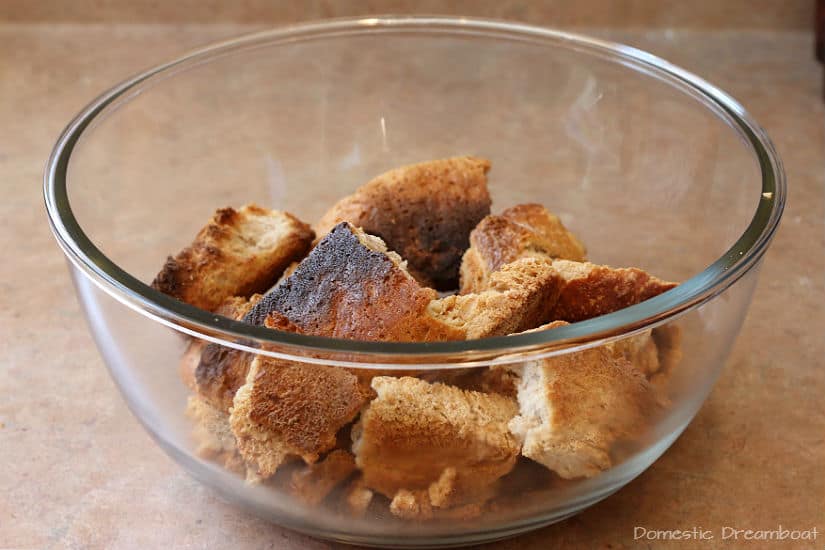
What is bread kvass?
In the ever-growing popularity of fermented beverages, kvass hasn't really caught on yet (perhaps it's the name - insert "Kiss my kvass" joke here). But I assure you, it will.
Bread kvass originates in Eastern Europe, popular in countries like Russia and Ukraine. It is commonly sold by street vendors there and is used as an alternative to pop.
I first learned about bread kvass while I was reading a book all about fermented foods. Since I often have bags full of stale bread laying around, I decided to give it a try. After all, if I didn't like it, all I'd be out was bread I wasn't going to eat anyway and a bit of sugar.

How do you make Bread Kvass?
The first step to making kvass is toasting your bread. This can take a while depending on the moisture content of your bread. You're going for a dark toast here, but not completely black.
The degree to which you toast your bread will drastically affect the resulting flavor of your kvass.
The first time I made it, I got distracted and the bread ended up a little black. The resulting kvass was pretty potent - kind of like a dark beer. I have since learned to keep a closer eye on my bread and take it out before the black stage to get slightly mellower kvass.
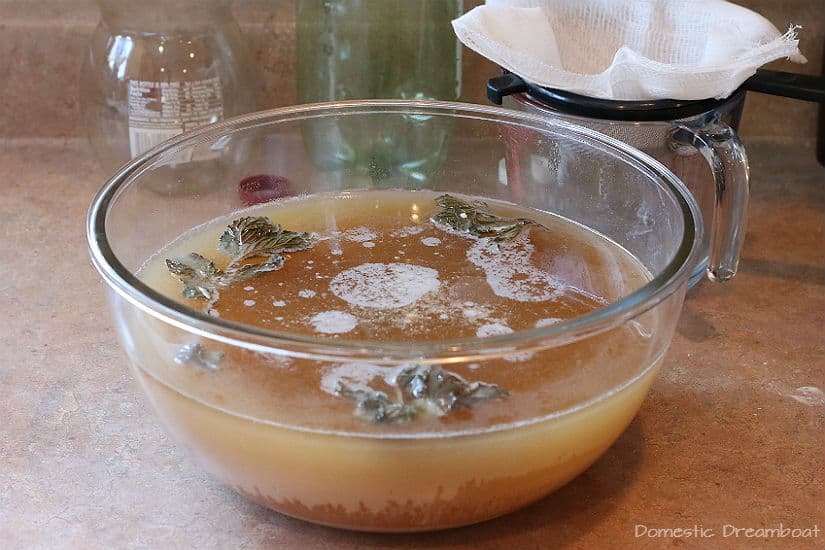
After the toasting is done, the process is pretty hands-off.
First you steep the bread in water.
Then you strain it (use cheesecloth if you don't want mashed bread in your kvass, and trust me, you don't).
Then comes the first ferment with some sourdough starter.
Another strain and pour into very clean plastic or glass bottles.
Since the kvass will become carbonated, you want to be careful about what type of bottles you choose. You can re-use old 2-liter pop bottles, provided you are able to clean them well.
You can also use sturdy glass bottles. I use glass bottles with swing-tops, and I vent any excess pressure every couple of days just to be on the safe side.
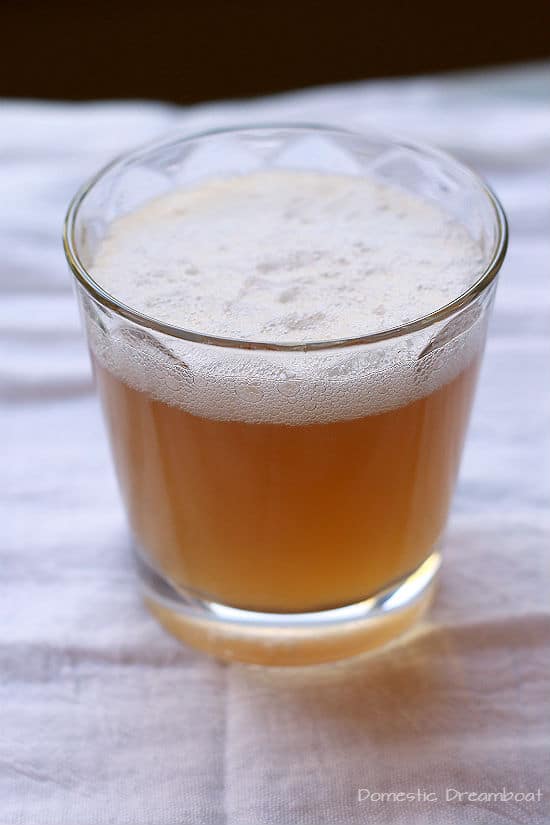
The mixture continues to ferment in the fridge. The yeast from the sourdough starter slowly consumes the sugar and turns it into acid and alcohol.
Does bread kvass contain alcohol?
Yes, kvass does have alcohol in it, but only a very low amount, 0.5-2%. The alcohol content is certainly low enough that you can't taste it, nor feel any effects, and I feel comfortable giving it to my kids in small amounts.
You can start drinking your kvass after 2-3 days, but the longer you leave it, the fizzier and sourer it gets.
Make sure you check the bottles every so often to make sure the pressure isn't getting too high.
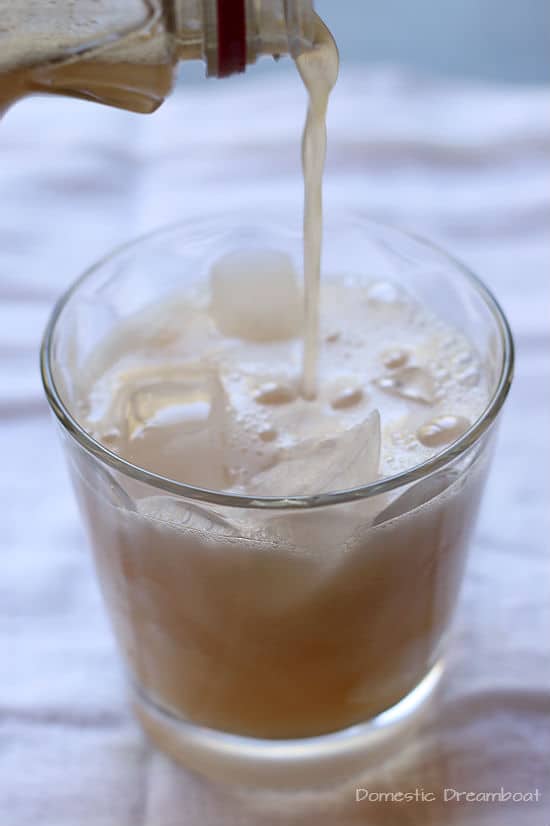
Want more recipes that use Sourdough Starter?
Kvass Nutrition Notes
I can't even begin to estimate the nutritional information of this bread kvass. I would have no idea how many nutrients are extracted out of the bread, and I also can't predict how much of the sugar will be used for fermentation.
However, I can tell you that the longer the kvass is allowed to ferment, the more sugar will be used up and turned into acid and/or alcohol.
How to Make Bread Kvass
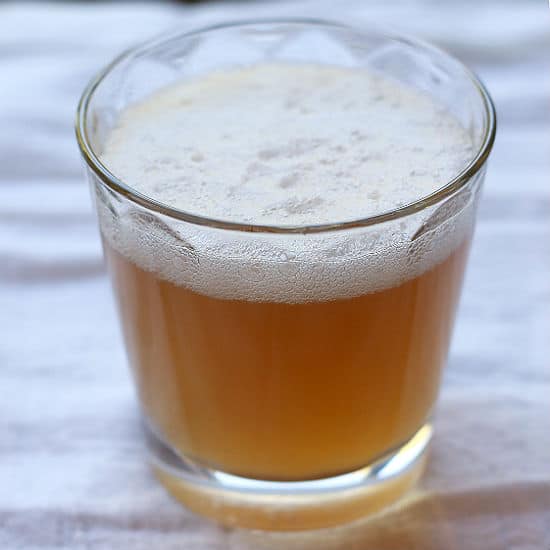
Ingredients
Instructions
- Heat oven to 350°F. Place bread slices on a wire rack set on top of a baking sheet. Bake until completely dry and dark brown (but not black), flipping slices occasionally. Baking time will depend on the moisture content of your bread.
- Boil water using a kettle or pot. Place bread in a large heat proof bowl. Pour boiling water over bread, just to cover. After half and hour, add more water as needed to cover bread as the bread will absorb some of the water. Let bread steep in water overnight.
- Line a wire mesh strainer with 2 layers of cheesecloth. Pour bread mixture through strainer into a pitcher. Add additional warm (not hot) water to come to 3L. Stir in sugar, honey and sourdough starter, add the mint. Let sit, lightly covered, in a warm spot until a slight foam forms on the top, 8-12 hours.
- Strain mixture through 2 layers of cheesecloth again and pour into plastic or glass swing-top bottles, being careful not to fill each bottle more than ⅔ full. Place bottles into fridge and ferment for 2-3 days. Check bottles occasionally for pressure. If they feel very firm, loosen lid slightly to relieve pressure then reclose.
- Kvass is ready to drink after 2-3 days, but it will continue to ferment after that. The longer it is allowed to ferment, the more carbonated and alcoholic it will become, but will still only be lightly alcoholic (maybe 0.5-2%). You can keep it in the fridge for up to a month.
Tried this recipe?
Please consider Leaving a Review!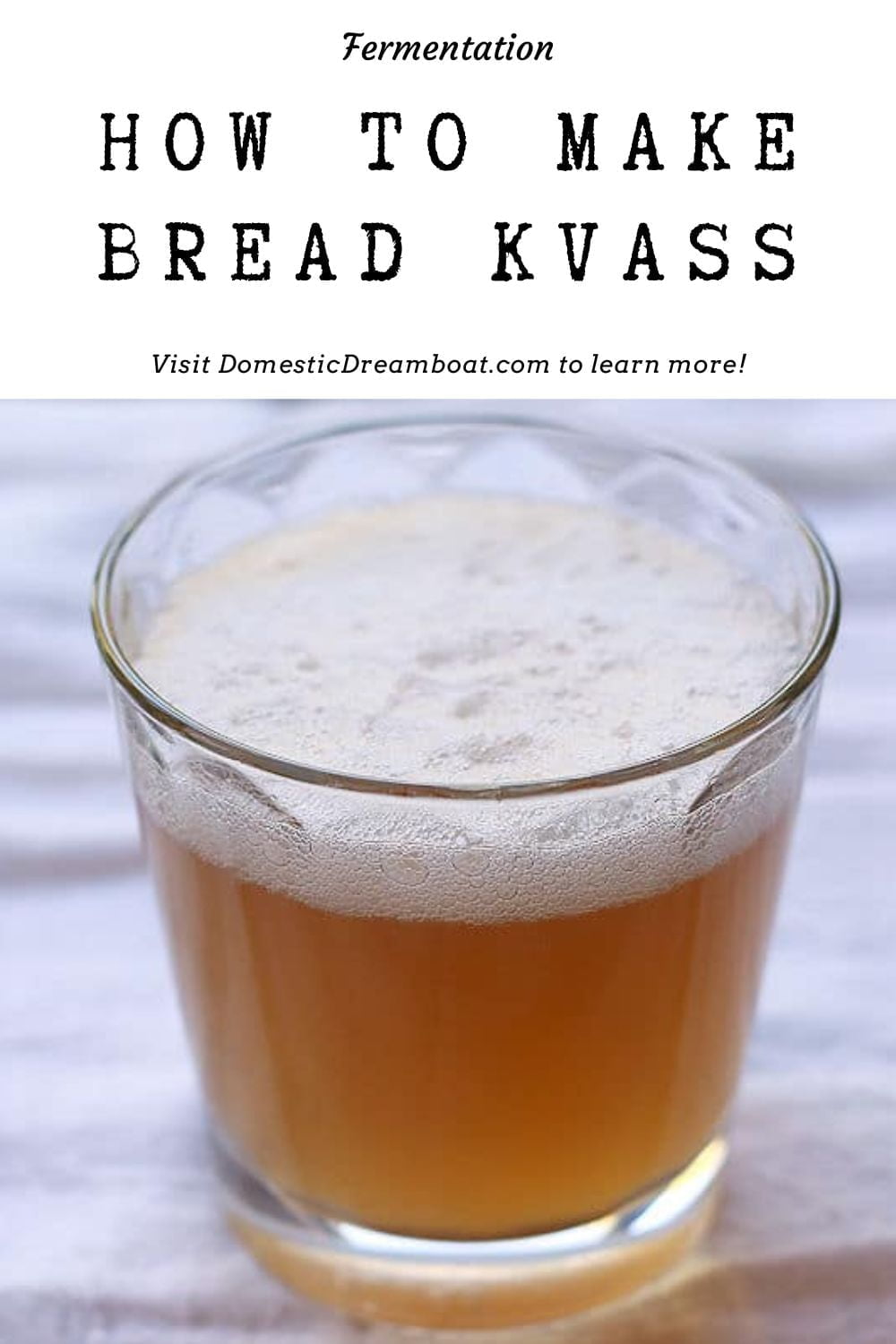

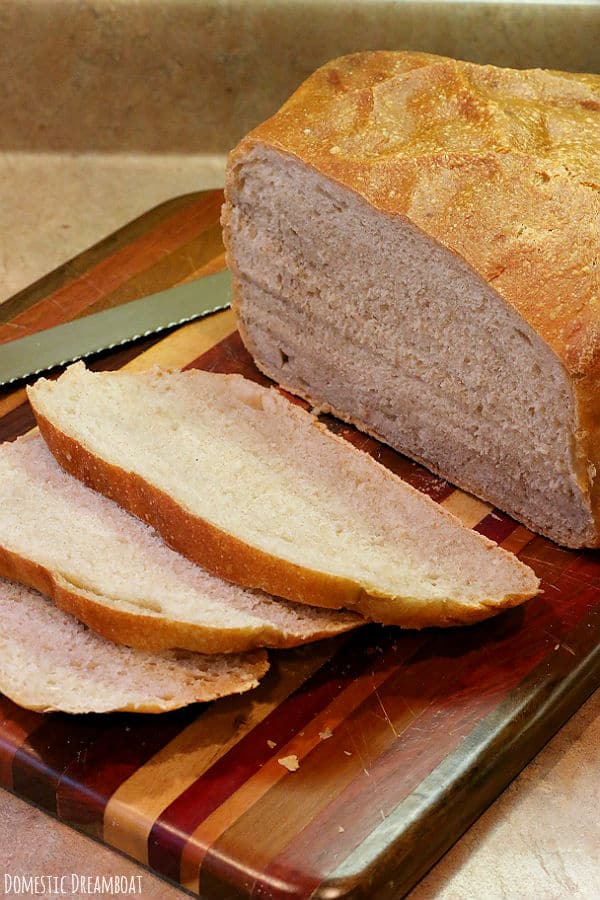





Jay arr says
Finally a good fermented drink recipe I can turn to. 😎😎 perfect to flavour bread kvass with fresh apple puree, cinnamon sticks n cloves this coming Christmas. 😄
Carissa says
Thanks! That sounds like a delicious (and healthier) Holiday drink!
Ashlee says
Just now coming across this recipe. I have a Kvass recipe in Nourishing traditions that uses raising and apples. Could I use those instead of the honey? Also does it need to have the sugar the NT recipe doesn't call for sugar. Thanks for any advice you can give!
Carissa says
This is the only Bread Kvass recipe I've ever tried, and I've never really made alterations to it, so I can't say whether the Nourishing Traditions recipe would work or not. From my experience making fermented beverages, you do need to add sugar in some form to feed the healthy bacteria/yeast that produce the fermentation. Sounds like some of the sugar in the NT recipe comes from apples and raisins, but without seeing the complete recipe, I can't really give much more advice. I'd be interested to hear if it works for you!
Joris Decoene says
Hello Carissa,
Thanks for sharing your experience and recipe of Kvass!
I just discovered this drink here in Poland and I'm planning to do my second experiment (first one with bakers yeast failed).
As far as I understand so far:
step 3 (open fermentation) = lacto fermentation, due to the lacto-bacillus in the sourdough starter (necessasry to get that sour taste typically for kvass)
step 4 (closed) = second fermentation due to the yeast in the starter (creating a minimal alcohol percentage)
Is this a right explanation 🙂 ?
Carissa says
Hi Joris,
I'm not an expert on fermentation, but after making Bread Kvass and Kombucha, yes, I believe you're right. During the first stage of fermentation, the microbes from the sourdough starter begin fermenting the sugar that is used, and produces acid (hence the sour flavor). The second stage of fermentation produces gas (carbon dioxide resulting in carbonation) and a small amount of alcohol. The resulting beverage still contains microbes that are beneficial to our health - probiotics. And tastes great too 🙂
Joris Decoene says
Great, thanks for your reply!
Already looking forward to all possible variations and additions 🙂
cheers
Joris